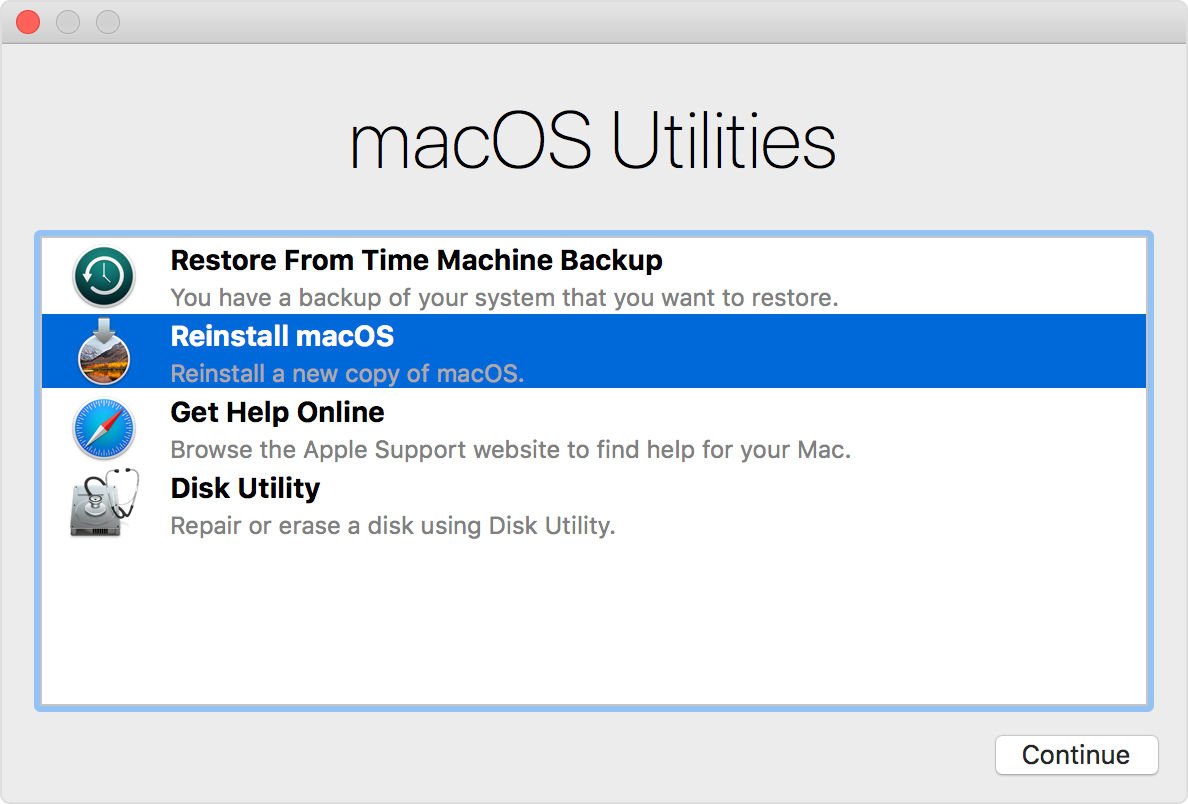macOS Recovery (often referred to as Mac Recovery Mode) was introduced back in 2010 with OS X 10.7 Lion. This Recovery HD partition contains the latest version of the macOS you installed on your Mac and makes it possible to troubleshoot issues with your Mac. It is a useful tool that the majority of Mac users will never need to use, unless one of the following applies:
- You need to wipe a Mac because you want to sell it or pass it on to a new user. MacOS Recovery will allow you to wipe your Mac, removing your data and your Apple ID. We have a detailed tutorial on how to wipe your Mac and restore it to factory settings.
- You need to troubleshoot problems, such as failure to start up. For more info read: What to do if your Mac won’t start up.
- There is an issue with your disk and you want to use Disk Utility to repair it. Read: How to use Disk Utility on a Mac.
- Or Disk Utility was unable to repair the issue with your drive…
- You are encountering problems with a particular version of macOS and want to go back an older version. Read: how to reinstall macOS using Recovery Mode.
- Or you want to do a clean install of macOS – this could fix issues that might be slowing down your Mac, for example. Here’s how to clean install macOS.
- Or you want to erase your disk for another reason…
- You want to restore from a Time Machine backup. Read: how to restore from Time Machine.
- You are having problems with your internet connection.
How to start Mac in Recovery Mode
The most often used way to enter Recovery Mode (on a Mac with an Intel processor) is this:
- Click on Apple logo at the top left of the screen.
- Select Restart.
- Immediately hold down the Command and R keys until you see an Apple logo or spinning globe. You will see the spinning globe if the Mac is trying to start macOS Recovery via the internet because it is unable to start from the built-in recovery system.
- Eventually your Mac will show the Recovery Mode Utilities window with the following options:

However, there are a number of different key combinations you can use to boot in Recovery mode depending on what you want to do, we detail these below.
How to start M1 Mac in Recovery Mode
If you have a new Mac with an Apple processor, such as the M1 Macs introduced in November 2020, you need to enter Recovery a different way to the one detailed above.
- Turn off the Mac.
- Press the on button and keep it pressed.
- Eventually the Apple logo will appear with text below it informing that if you continue holding the power button you will be able to access startup options. Keep pressing that button.
- Eventually you will be able to select Options > Continue and this will open up Recovery.
Which keys to use for macOS Recovery Mode
Depending on what you want to do with macOS Recovery there are a number of key combinations to use during start up – these options work on an Intel-powered Mac:
Command + R
Use this if you want to install the latest version of macOS that you had installed on your Mac (it won’t install a newer version if you hadn’t upgraded). Note that if you’re selling or giving away a Mac that is using OS X El Capitan or earlier you should also use Command + R – this will make sure that the installation isn’t associated with your Apple ID.
Option/Alt + Command + R
Use this if you want to upgrade to the latest version of macOS that is compatible with your Mac.
Shift + Option + Command + R
This will install the version of macOS that came with your Mac, or the one closest to that version if it isn’t available as a download.
Mac Recovery Mode options
When you start up in Recovery Mode you will see the following options:
Restore from a Time Machine backup
If you have a Time Machine backup this is an easy way to restore your system
Reinstall macOS
This will allow you to reinstall macOS (the version will depend on the key combination used above)
Get Help Online
To access Apple’s support web pages. This gives you access to Safari so you can look for the help you need, but some browser features won’t be available.
Disk Utility
This option allows you to verify and repair connected drives.
Select the option that applies to you and click Continue.
We have various tutorials that might help you here. For example:
- How to restore from a Time Machine Backup
- How to reinstall macOS using Recovery
- How to use Disk Utility
Other options in Recovery Mode
There are also various options accessible from the menu at the top of the page via the File, Edit, Utilities and Window tabs. These include:
Terminal
Here’s how to access Terminal in macOS Recovery:
- Start up in Recovery Mode as above.
- Click on Utilities in the menu bar.
- Click on Terminal.
